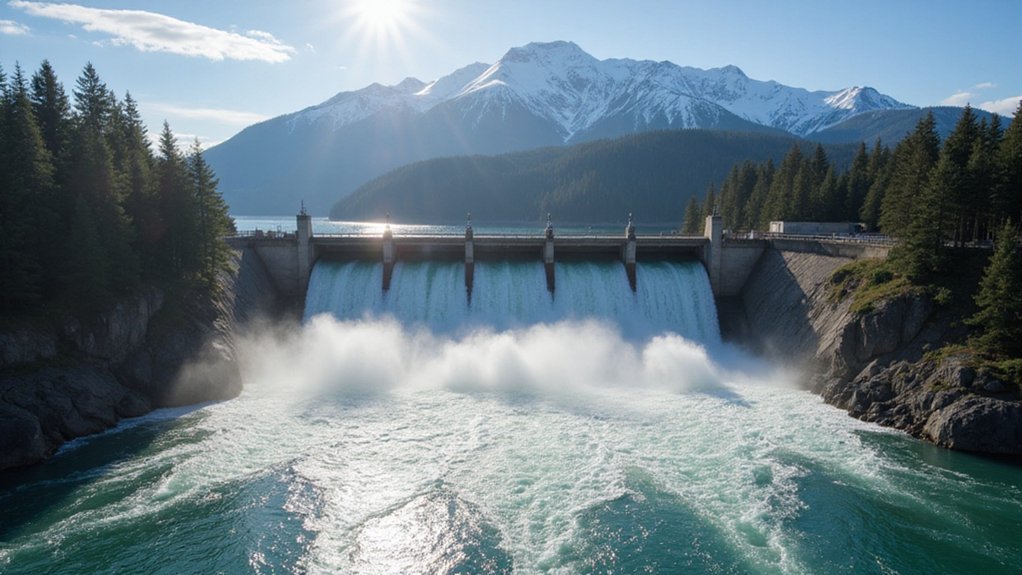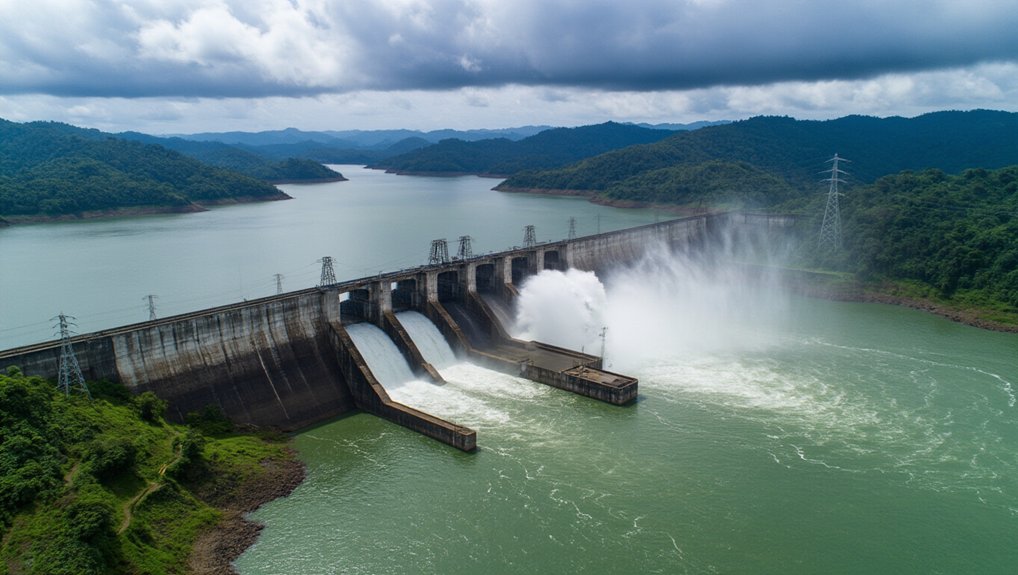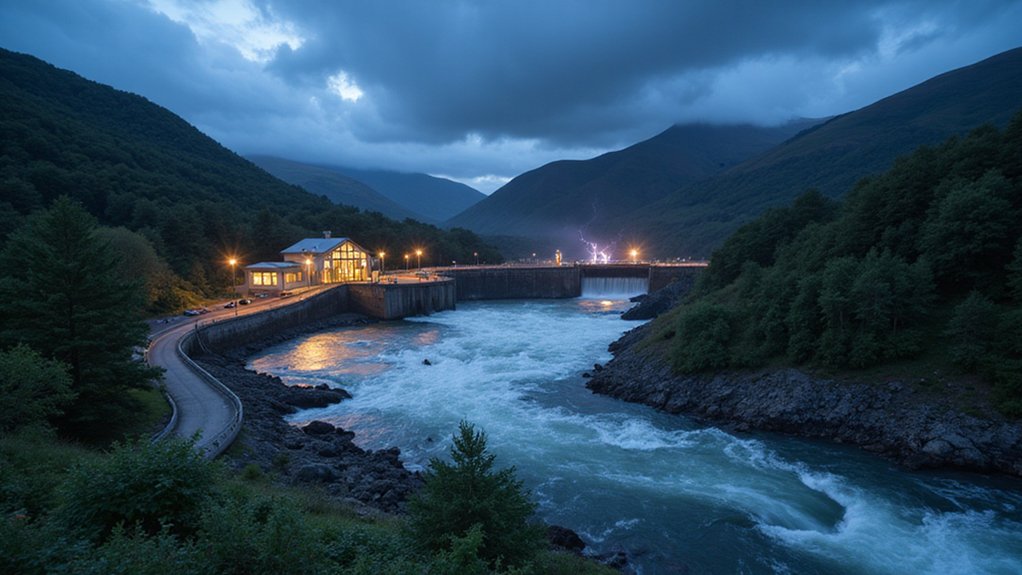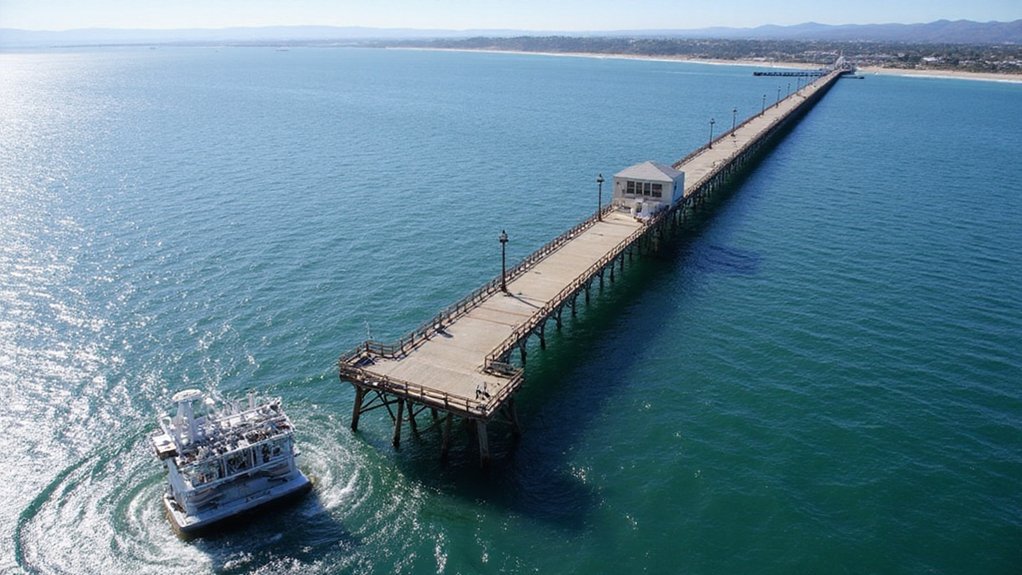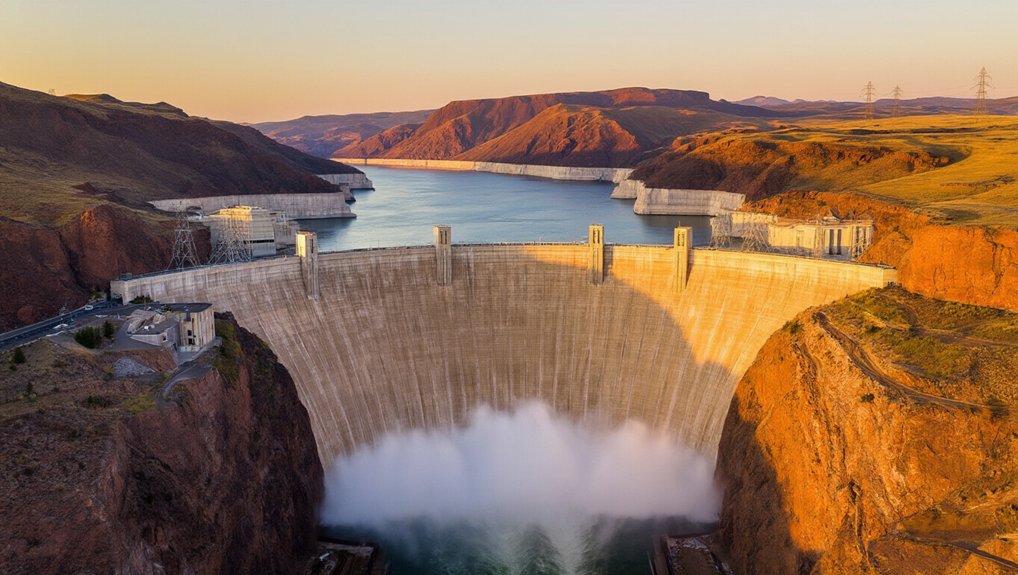Surging from historic lows, America’s hydropower generation is expected to climb by 7.5% in 2025, according to recent forecasts. After falling to 241 billion kilowatt-hours in 2024, the lowest level since at least 2010, production is projected to reach 259.1 kilowatt-hours next year. Despite this increase, the 2025 figures will still remain a 2.4% below the 10-year average.
Hydropower is set to provide about 6% of total U.S. electricity in 2025. This marks a slight improvement from 2024 but doesn’t fully restore hydropower’s typical contribution to the nation’s energy mix. In 2022, hydropower accounted for about 6.2% of total electricity generation and 28.7% of renewable energy production.
Nearly half of America’s hydropower capacity is located in Washington, Oregon, and California. These western states experienced mixed precipitation between October 2024 and April 2025. Southeastern Oregon saw record precipitation, while Northern California and eastern Washington received above-normal amounts. However, some areas in Washington, Montana, Idaho, and Southern California faced below-normal precipitation, affecting regional output potential.
Winter precipitation is vital for hydropower production, with snowpack at high elevations serving as a natural water reservoir. This snow gradually melts as temperatures rise in spring and early summer, increasing water flow through dams and boosting electricity generation. This seasonal pattern plays a major role in yearly hydropower performance. Unlike geothermal energy which maintains high capacity factors regardless of weather conditions, hydropower remains dependent on precipitation patterns.
The 2024 historic low hit the Pacific Northwest particularly hard. Similar production drops have occurred during previous drought years across the country. The region is now seeing improved generation figures compared to the previous year’s performance. The Northwest and Rockies region is forecasted to generate 125.1 BkWh in 2025, a 17% increase from 2024 levels. Experts continuously monitor snowpack levels and drought conditions to update generation forecasts throughout the year.
While the 2025 rebound represents significant progress, it highlights hydropower’s vulnerability to weather patterns and climate conditions. Ongoing investments in modernizing existing dams and improving infrastructure resilience aim to stabilize future generation capacity in the face of increasingly variable precipitation patterns.
References
- https://www.eia.gov/todayinenergy/detail.php?id=65286
- https://www.industrialinfo.com/news/abstract/eia-us-hydropower-generation-to-increase-this-year–342135
- https://www.energy.gov/eere/water/hydropower-market-reports
- https://hydrosource.ornl.gov/data/datasets/us-hydropower-development-pipeline-data-2025/
- https://www.renewableenergyworld.com/hydro-power/u-s-hydro-generation-expected-to-rise-after-a-dip-in-2024/
